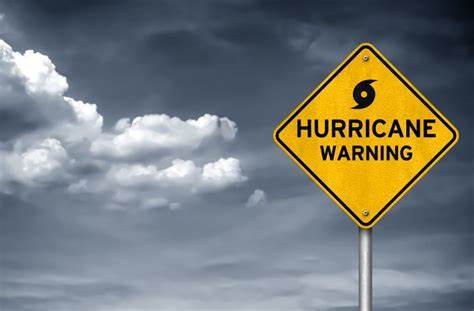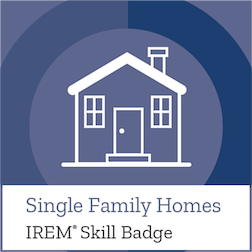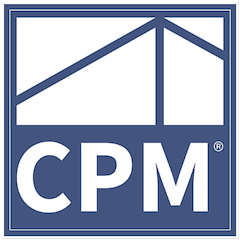Storm Watches, Warnings, Advisories
It is very important to become familiar with all the terms used by the National Hurricane Service when a tropical storms is heading to our area. Tenants and Landlords must prepare for the storm in a timely manner and follow all instructions from the local authorities. An excellent resource of information is the NHS website at https://www.nhc.noaa.gov/
Let's see some definitions:
- Tropical Weather Outlook: The Tropical Weather Outlook is a discussion of significant areas of disturbed weather and their potential for development during the next 5 days. The Outlook includes a categorical forecast of the probability of tropical cyclone formation during the first 48 hours and during the entire 5-day forecast period. You can also find graphical versions of the 2-day and 5-day at the NHS Website
- STORM OR HURRICANE WATCH:
- Storm Surge Watch: There is a possibility of life-threatening inundation from rising water moving inland from the shoreline somewhere within the specified area, generally within 48 hours.
- Hurricane Watch: Hurricane conditions (sustained winds of 74 mph or greater) are possible within your area. Because it may not be safe to prepare for a hurricane once winds reach tropical storm force, The NHC issues hurricane watches 48 hours before it anticipates tropical storm-force winds.
- Tropical Storm Watch: Tropical storm conditions (sustained winds of 39 to 73 mph) are possible within the specified area within 48 hours
Listen closely to instructions from local officials on TV, radio, cell phones or other computers for instructions from local officials. Evacuate if told to do so. This is the time to prepare for the storm. Check all supplies you may need. Make a list of anything you need to buy and do so in the next few hours.
STORM OR HURRICANE WARNING:
- Storm Surge Warning: There is a danger of life-threatening inundation from rising water moving inland from the shoreline somewhere within the specified area, generally within 36 hours. If you are under a storm surge warning, check for evacuation orders from your local officials.
- Hurricane Warning: Hurricane conditions (sustained winds of 74 mph or greater) are expected somewhere within the specified area. NHC issues a hurricane warning 36 hours in advance of tropical storm-force winds to give you time to complete your preparations. All preparations should be complete. Evacuate immediately if so ordered.
- Tropical Storm Warning: Tropical storm conditions (sustained winds of 39 to 73 mph) are expected within your area within 36 hours.
- Extreme Wind Warning: Extreme sustained winds of a major hurricane (115 mph or greater), usually associated with the eye-wall, are expected to begin within an hour. Take immediate shelter in the interior portion of a well-built structure.
Please note that hurricane and tropical storm watches and warnings for winds on land as well as storm surge watches and warnings can be issued for storms that the NWS believes will become tropical cyclones but have not yet attained all of the characteristics of a tropical cyclone (i.e., a closed low-level circulation, sustained thunderstorm activity, etc.). In these cases, the forecast conditions on land warrant alerting the public. These storms are referred to as “potential tropical cyclones” by the NWS.
Hurricane, tropical storm, and storm surge watches and warnings can also be issued for storms that have lost some or all of their tropical cyclone characteristics, but continue to produce dangerous conditions. These storms are called “post-tropical cyclones” by the NWS.
Listen closely to instructions from local officials on TV, radio, cell phones or other computers for instructions from local officials. Evacuate if told to do so. This is the time to prepare for the storm. This is the time to put up shutters, bring in all patio furniture, exterior items, plants, anything that cannot be secured. This is also the time to effectuate your hurricane plan, either evacuate by going to a shelter, hotel, leaving the area to a friends house or stay home if you are not in an evacuation area.
What are advisories?
- Tropical Cyclone Public Advisory: The Tropical Cyclone Public Advisory contains a list of all current coastal watches and warnings associated with an ongoing or potential tropical cyclone, a post-tropical cyclone, or a subtropical cyclone. It also provides the cyclone position, maximum sustained winds, current motion, and a description of the hazards associated with the storm.
- Tropical Cyclone Track Forecast Cone: This graphic shows areas under tropical storm and hurricane watches and warnings, the current position of the center of the storm, and its predicted track. Forecast uncertainty is conveyed on the graphic by a “cone” (white and stippled areas) drawn such that the center of the storm will remain within the cone about 60 to 70 percent of the time. Remember, the effects of a tropical cyclone can span hundreds of miles. Areas well outside of the cone often experience hazards such as tornadoes or inland flooding from heavy rain
Our recommendation is that at the beginning of hurricane season, June 1, you must have your hurricane kit ready with all needed and required supplies and also have your hurricane plan in place, check if you are located in an evacuation zone and check the protection your property has. You also should check your lease agreement to verify who is responsible to protect the home from the storm and review your insurance policies for hazard coverage, wind coverage and flood coverage. Tenants must check their renters insurance policy since the landlord's policy will not cover any of their personal property or liability or injury that may happen due to the storm.














